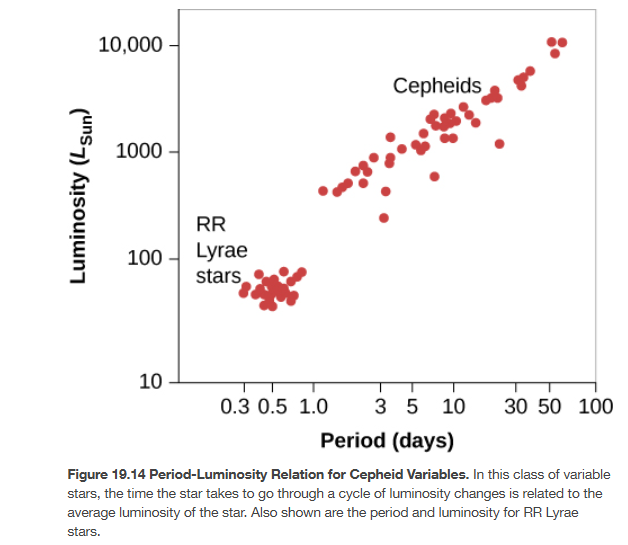chapter 19.2; surveying the stars & 19.3; variable stars & 19.4 the H-R diagram and cosmic distances
1/9
There's no tags or description
Looks like no tags are added yet.
Name | Mastery | Learn | Test | Matching | Spaced |
|---|
No study sessions yet.
10 Terms
parallax
the apparent change in direction of a remote object to due a change in vantage point of the observer
the angle subtended by the baseline
as Earth travels from one side of its orbit to the other, it provides us with a baseline of 2AU


3.26 light years
how far away would a star have to be to have a parallax of 1 arcsecond with a baseline of 1 arcsecond?
eequal to 3.1 × 10^14 km
parsec (pc)
distance of a star in parsecs


variable stars
stars that vary in their brightness
many of these stars vary on a regular cycle
light curve
a graph that shows how the brightness of a variable star changes with time
maximum; is the point of the light curve where the star has its greatest brightness
minimum; is the point where it is faintest
period; if the light variations repeat themselves periodically, the interval between the two maxima is the period of a star
cepheid and RR Lyrae
two special types of variable stars for which measurements of the light curve can give us accurate distances
pulsating variable stars
diameter changes over time, expanding and contracting
cepheid variables
large, yellow pulsating stars
names for the first star of the group, Delta Cephei
several hundred in our Galaxy
most cepheids have periods in the range of 3-50 days
luminosities are about 1000-10,000 times greater than that of the Sun
variations in luminosity range from a few percent to a factor of 10


the period-luminosity relation
relation allows you to ‘read off’ how bright the star really is
astronomers can then compare this intrinsic rightness with the apparent brightness of the star
brighter appearing cepheids always have the longer periods of light variation
RR Lyrae stars
named for the star RR Lyrae, the best-known member of the group
more common than cepheids
less luminous than cepheids
thousands in our Galaxy
periods are always less than 1 day
changes in brightness are typically less than about a factor of two
luminosity classes
most widely used system of star classification divides stars of a given spectral class into 6 categories
Ia: Brightest supergiants
Ib: Less luminous supergiants
II: Bright giants
III: Giants
IV: Subgiants (intermediate between giants and main-sequence stars)
V: Main-sequence stars